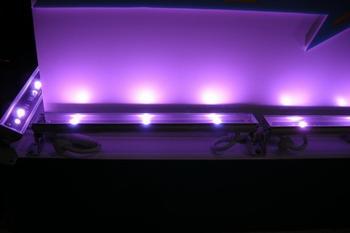 Research analyst IDTechEx senior technical analysts believe that OLED lighting will become a 1.3 billion dollar market in 2023, equivalent to 1.3% of the LED lighting market.
Research analyst IDTechEx senior technical analysts believe that OLED lighting will become a 1.3 billion dollar market in 2023, equivalent to 1.3% of the LED lighting market. IDTechEx's latest report “OLED Lighting vs. LED Lighting 2013-2023†stated that OLED lighting technology will create its unique selling point. However, if there is no such technology innovation as Apple’s, OLED lighting technology may not be able to surpass the price/performance ratio. LED lighting technology. If OLED lighting companies are to develop niche markets in the hotel, shopping, and construction industries, they will inevitably need to develop their superior design features. Due to fierce competition in the industry, the profits of panel makers will continue to shrink, and capital will also be transferred to downstream industries such as fixtures/lighting designers.
OLED Lighting Performance - Efficiency and Life OLED displays are rapidly evolving, but their lighting peers are still trying to define their unique selling points. Today, OLED lighting energy efficiency still lags behind OLED lighting. The reason is that the LED lamp (LED chip package) usually provides 90-100lm/W while the OLED device energy efficiency still stays in the 20-50lm/W stage. The service life of LED is far more than that of OLED. Usually, the service life of LED lamp is more than 50,000 hours, which is the reason why it discovered the niche market in outdoor applications. In comparison, OLED lighting has a lifetime of only 5,000 to 15,000 hours.
price:
LED lighting costs less, lighting costs $ 20 - $ 100 / klm package price is $ 5 / klm. In stark contrast to this, OLED's high prices, in addition to the cost of fixture design, retail, installation and profitability, OLED costs are between US$300 and US$500/klm. The main reason for high prices is the encapsulation layer (obstacles, stickiness). Mixtures and desiccants) and integrated substrates (transparent conductive layers, substrates, and outcoupling layers).
In the current configuration, hollow glass is used as a barrier. This is also a process to increase costs (using a sandblasting method to create a cavity). Due to low demand, large glass manufacturers are also reluctant to give production promises. The system configuration includes: opening the cavity on the glass, from the glass to the package, all of which are required to reduce costs. Today, packaging layers (including desiccants and adhesives) cost 400-500 US dollars per square meter.
The integrated substrate is also one of the reasons for the increase in stimulus costs. The integrated substrate includes a substrate (glass), a transparent conductive layer (mostly indium tin oxide), a metal electrode, planarization (photolithography/etching patterning), and an external light extraction film. The entire stack now costs 800-900 US dollars per square meter, however, with the emergence of innovative technologies such as printing and grid materials, the cost is expected to drop to 100-120 US dollars per square meter by 2023.
Today's OLED and LED lighting performance is summarized as follows:
Although today's OLED products use only Gen-2 substrates, they still have the potential to provide large areas of light illumination. Similarly, most rigid OLED lighting applications today use OLEDs, which still provide good form factor.
However, OLED lighting is still in its infancy:
Have to admit that the development of LED lighting is far more mature, the investment for LED lighting research and development is also much higher than OLED lighting. Recently, many companies are actively active in the field of OLED lighting, and investment has also increased. For example, due to the influence from the OLED image display industry and the cost pressure brought about by mass production, we hope to quickly reduce the cost rate through active materials. At present, the active material costs 350-400 US dollars per square meter, but in 2023 is expected to drop to 70-90 US dollars per square meter.
With the development of OLED image display industry, it will also drive the development of OLED lighting (in the overlapping part of the two supply chains), reduce the cost of OLED products, improve performance, and share the challenges that OLED lighting applications will face.
Design factor:
LED lighting is essentially a point light source, while OLED lighting is a surface light source. Although OLED lighting has certain advantages at this point, it is not an overwhelming advantage after all. Together with the waveguide, the LEDs can also achieve surface light emission in parallel. At the same time, Gen-2 substrates are used in most OLED products.
The form factor (mechanical flexibility) is also usually a major selling point. The main reason behind the current OLED technology is its glass-based encapsulation layer, and the technical development of flexible barriers in OLED image display will help change this situation. OLEDs also have advantages in color temperature, weight, and thickness.
The task of OLED development in the next few years has also fallen on the light source/fixture designer who develops and sells niche products, and improved design parameters to optimize OLED products.
Grinder Machine,Surface Grinding Machine,Grinding Equipment,Tool Grinding Machine
Hunan Furui Mechanical and Electrical Equipment Manufacturing Co., Ltd. , https://www.thresher.nl
![<?echo $_SERVER['SERVER_NAME'];?>](/template/twentyseventeen/skin/images/header.jpg)